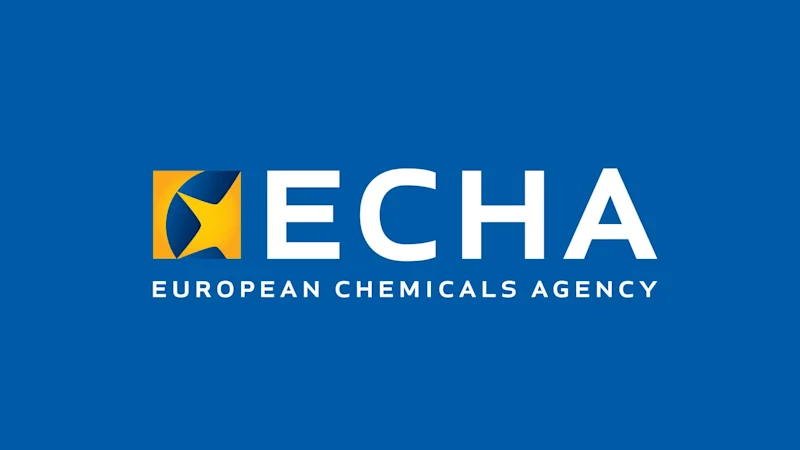
EU Ministers Press Commission on Delayed REACH Revision Amid Industry and Environmental Demands
EU Member States urge the Commission to accelerate the REACH revision, citing urgent health, environmental, and industry competitiveness needs.


The European Chemicals Agency (ECHA) published its 2023 annual report, highlighting significant progress in chemical safety through its Integrated Regulatory Strategy (IRS). This report summarises ECHA’s achievements in identifying hazardous substances, addressing regulatory needs, and collaborating with EU Member States to prioritise risk management for chemicals across the EU.
ECHA’s Integrated Regulatory Strategy, implemented between 2019 and 2023, has screened over 6,000 chemical substances, identifying about 30% as candidates for further regulatory risk management (RRM). The agency prioritised high-volume chemicals, particularly those exceeding 100 tonnes per year, and also screened around 20% of lower-volume substances due to their potential risk profiles.
“Almost all high-tonnage chemicals have been assessed or categorised for regulatory action,” said Ofelia Bercaru, ECHA’s Director of Prioritisation and Integration. By the end of 2024, nearly all substances registered by 2018 are expected to be screened, marking a critical step toward ensuring chemical safety across industries.
The flagged chemicals are used across a range of industries, including automotive, construction, electronics, textiles, and consumer products. Many of these substances play essential roles in the formulation of plastics, paints, adhesives, and cleaning products. For instance:
The chemicals highlighted by ECHA’s report present risks that span both environmental and human health concerns. Many of these substances are flagged for potential carcinogenic, mutagenic, or toxic (CMR) properties, meaning they may be harmful if inhaled, ingested, or if they come into contact with skin. Others are classified as persistent, bioaccumulative, and toxic (PBT) substances, which resist degradation and accumulate in the ecosystem, causing long-term ecological impacts. ECHA’s assessment process helps prioritise substances for action, focusing on both human health and environmental safeguards.
Following ECHA’s report, the flagged chemicals will undergo further regulatory processes, including potential classification under REACH as Substances of Very High Concern (SVHC), harmonised labelling, and possible restrictions or authorisation requirements. ECHA’s Risk Management and Evaluation Platform (RIME+) will guide EU Member States and industry stakeholders through each stage, ensuring coordinated actions across the EU to manage the identified risks effectively.
ECHA has placed significant emphasis on transparency and cooperation with EU Member States, utilising tools like the Public Activities Coordination Tool (PACT) and the Risk Management and Evaluation Platform (RiME+). These initiatives have bolstered information-sharing on regulatory actions and streamlined decision-making for potential RRM processes. ECHA also collaborates with industry groups under initiatives like the Joint Evaluation Action Plan (JEAP) to identify data needs and improve dossier quality for registered substances.
Despite these achievements, ECHA reports ongoing challenges, including limited regulatory capacity and insufficient data on chemical hazards and exposures. ECHA notes that addressing data gaps for certain groups of substances may take years, impacting the timeliness of RRM actions. Additionally, ECHA has begun exploring alternative data-generation methods, like new approach methodologies (NAMs), to accelerate risk assessments.
For 2024-2028, ECHA has outlined an updated regulatory framework that will focus on coordinated prioritisation, enhanced database management, and expanded collaboration. Notably, the agency aims to leverage its new regulatory tasks under the Drinking Water Directive, Industrial Emissions Directive, and Batteries Regulation to ensure a unified regulatory approach.
The report underscores ECHA’s commitment to strengthening regulatory actions and enhancing EU-wide chemical safety standards. As the agency enters a new strategic phase, it aims to deepen collaboration with the European Commission and Member States to advance RRM and continue its mission towards sustainable chemical safety.
Foresight continuously tracks 1000s of sources and maps updates to your portfolio:




EU Member States urge the Commission to accelerate the REACH revision, citing urgent health, environmental, and industry competitiveness needs.

Dutch water authorities call for stronger biocide regulation to protect water quality and meet EU Water Framework Directive goals.

The EU has classified DBDPE as a substance of very high concern (SVHC) due to vPvB properties, affecting manufacturers and downstream users of flame retardants.
Subscribe to Foresight Weekly and get the latest insights on regulatory changes affecting chemical compliance.
Free forever. Unsubscribe anytime.
Read by professionals at